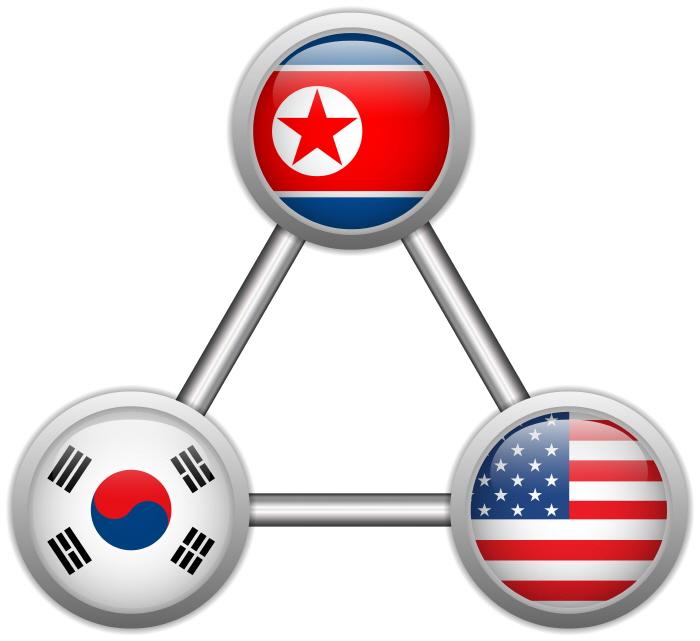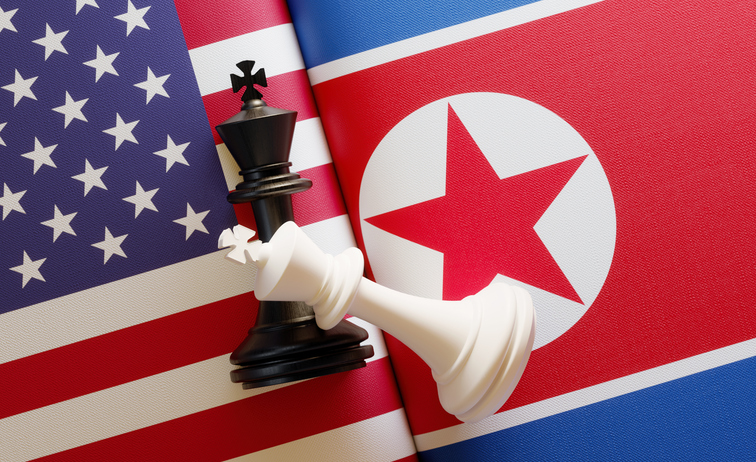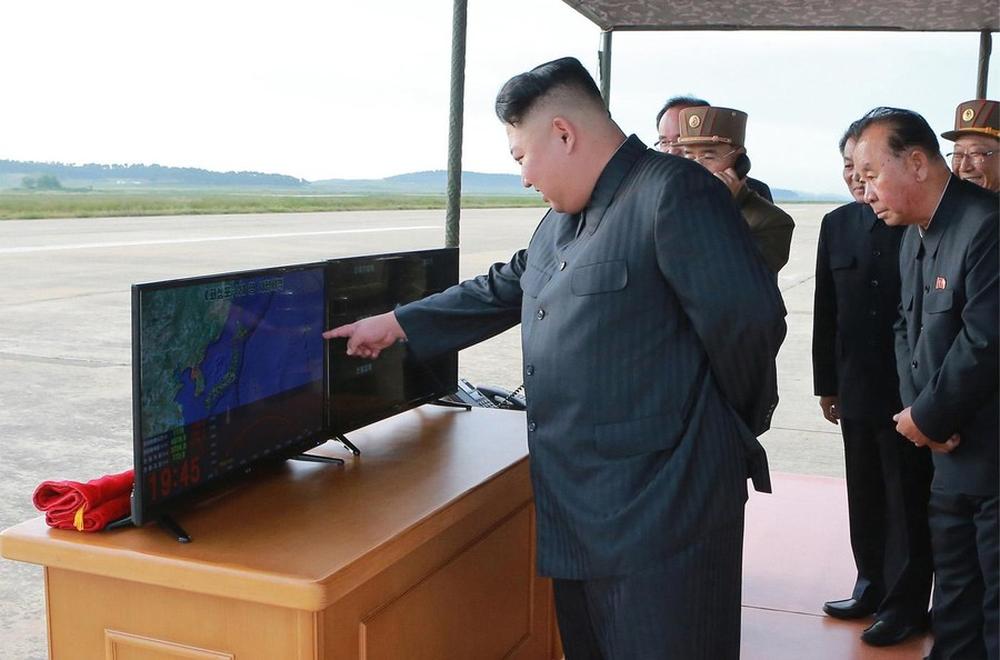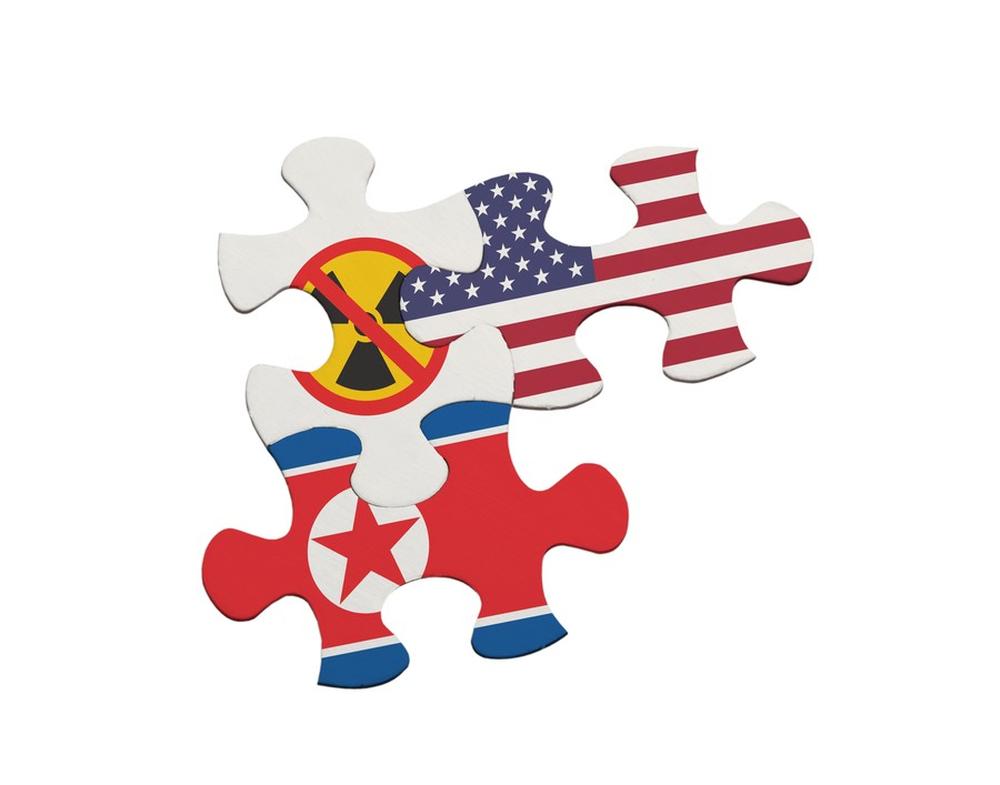- #Inter-Korean Relations
- #North Korea
- #US Foreign Policy

The Biden administration has rolled out what it is describing a “calibrated and practical approach” to negotiations with North Korea, with seemingly more realistic expectations about the pacing and sequencing of negotiations once they resume. However, there appears to be no real strategy for how to restart negotiations—at least not one that recognizes how political dynamics have changed since the last round. Given the high-profile failures of the 2018-2019 diplomatic processes, North Korea is likely to remain reluctant to return to talks until there is high confidence that tangible outcomes can be achieved.
Kim’s Lost Bet
The high profile, high stakes summits of 2018 and 2019 were a big gamble for Kim Jong Un. Not only was it his diplomatic debut, but one where he raised domestic expectations that the bet would lead to swift and dramatic results.
After friendly overtures to South Korea in Kim Jong Un’s 2018 new year’s speech, negotiations between the two Koreas accelerated quickly, moving seamlessly from Olympic cooperation to matters of peace and security on the Korean Peninsula. The surprise acceptance of a first ever summit between US and DPRK leaders started a parallel negotiation process between Washington and Pyongyang, exploring where Trump’s unconventional approach to diplomacy could lead.
For the inter-Korean process, a summit was planned and the first agreement was signed within months of initiating diplomacy—one that committed to economic and military cooperation, although with few details for how those measures would be achieved. The high-level commitment on both sides kept negotiations going to work out the details of implementation, even when progress started to slow. Kim even hosted their second summit in Pyongyang: allowing North Koreans to attend South Korean cultural exhibitions; providing President Moon the opportunity to directly address a live North Korean audience; and even traveling with Moon to the sacred Mt. Baekdu, and domestically promoting the optics that real change in North-South relations change was coming.
But by the end of 2018, even before the Pyongyang Summit took place, Kim was showing signs of frustration, constantly challenging Moon to not let external actors interfere with inter-Korean affairs and to make good on the commitments signed onto in the Panmunjom Declaration. South Korea was paralyzed on this agenda though, hampered by sanctions and unable to secure the international cooperation needed to move forward on the substantive parts of the agenda.
In the parallel US-DPRK diplomatic process, North Korea took a number of unilateral measures up front to help create a political climate conducive to changing relations. In addition to the unilateral nuclear weapons and long-range missile test moratorium North Korea declared at the beginning of the inter-Korean process, Pyongyang also returned all remaining US detainees; permanently dismantled its Punggye-ri nuclear test site, witnessed by international observers (media); and removed negative language about the US and South Korea from domestic propaganda. At the Singapore Summit, Trump also reported Kim had pledged to dismantle the rocket launch pad and engine test stand at its Sohae Satellite Launching Station, which was then later formalized in the Pyongyang Declaration. While these gestured were largely criticized at the time for not being big enough—as they weren’t “denuclearization”—they were significant symbolic gestures. The dismantlement of the nuclear testing site, for instance, helped convey an intention to refrain from the further nuclear testing in the foreseeable future—a point of growing tensions with the Chinese especially. And dismantlement of the launch pad at Sohae implied a restraint from further satellite launches—a loophole North Korea had been exploited in the past during missile moratoria, derailing US-DPRK agreements as recently as the Leap Day Deal in 2012.
However, the North’s unilateral measures were neither appreciated or reciprocated. Despite the commitment to work on transforming US-DPRK relations made in the Singapore Joint Statement, no real change in US policy was enacted. Sanctions continued to be imposed, the ban on US citizens travelling to North Korea continued, and US government actively campaigned around the world to improve sanctions enforcement and pressure on the North.
Despite these signals from the US, North Korea appears to have believed an initial deal would be made in Hanoi in February 2019. More importantly, the North Koreans continued to build domestic expectations in the lead up to the summit that this would be a watershed moment in the country’s political and economic relations—raising the stakes for the summit’s outcome. While the working level negotiators were unable to confirm what Kim Jong Un was going to offer, they indicated it would be something big. By North Korea’s calculations, Kim’s offer was indeed big, however, by US estimations, not big enough to justify the North’s reciprocal demands.
Consequently, when Kim walked away from Hanoi empty handed, it wasn’t just a negotiation gone bad—it was a loss of face as a negotiator and a leader. Having to go back, admit these failures and work to lower public expectations again about the country’s prospects for the future were no doubt a difficult and humiliating experience—one that has serious implications for the next round of negotiations.
The Implications of Failure
As 2018 was Kim Jong Un’s first high-profile diplomatic initiative, his failure is likely to weigh heavily on how and when he decides to try again. In multiple statements made by Kim since late 2019, there have been two key messages that reflect the consequences of his unsuccessful diplomatic attempts.
The first was a change in belief that improved external relations would lead to economic gains and development opportunities. Although Kim appears to have miscalculated how quickly either of those things could change, his experiences negotiating with the US and ROK were disillusioning. He emerged from the process with a view that the fundamental relationship with the US was unlikely to change—either in the near term and perhaps ever. As such, even if relations improved slightly, it wouldn’t be enough to bring about substantive sanctions relief or other measures that would increase economic opportunities. Instead, he discussed the need for the country to work on building up its resiliency to a persistently hostile external political and economic environment and laid out instructions for improving leadership and accountability as well as modifying economic practices and infrastructure.
What this also meant was that there was no longer an incentive to rush back to negotiations with the US, where the nature of relations is relatively static and that even small near-term gains would be hard fought and come at a high price. Rather than expend this kind of energy and political capital again, given such low expectations of success, North Korea appears to be focusing its foreign policy on the cultivation of more sympathetic states—states with shared history, values or enemies. This includes China and Russia, naturally, but also countries like Syria, Venezuela, Palestine and Cuba—countries that are less susceptible to US pressure on sanctions implementation and can provide quicker tangible benefits.
The second key message was that in order to get back to negotiations, the ball is in Washington’s court. For Kim, there was no benefit gained from making the first move in 2018—the North’s unilateral measures went unreciprocated. There was no benefit from dealing directly with the president either, as verbal commitments went unfulfilled. Going forward, Kim is likely to be reluctant to place a new bet on negotiations with the United States without clear signals that a new process can bring about actual near-term results.
What Comes Next?
While the Biden administration has announced a new North Korea policy, its core tenets appear to be a return to a traditional US approach: a stated goal of denuclearization, while bolstering sanctions and deterrence, working closely with allies and placing a renewed emphasis on human rights.
While the US has not created barriers to resuming negotiations—presteps or preconditions—it has given little indication that its fundamental position has changed—diplomacy is discussed in very vague and noncommittal terms, while the threat North Korea poses is highlighted and accompanied by strong language on the need to maintain sanctions and pressure until progress is made. Although there was brief mention in the US-ROK Leaders’ Joint Statement signed at the end of the May summit between US President Joe Biden and ROK President Moon Jae-in that diplomacy needed to be based on the Panmunjom Declaration and Singapore Joint Statement, few of the principles set forth in those documents are reflected in US policy talking points. In the Singapore Joint Statement, for instance, equal priority is placed on transforming US-DPRK relations, building a peace regime, and working toward denuclearization. But the new “calibrated and practical approach” has a stated goal of denuclearization of the Korean Peninsula, with little to no talk about the other pillars of the agenda. Moreover, there appears to be no appetite in Washington to take measures up front—symbolic or otherwise—that would reflect the US-DPRK relationship could change.
Until the Biden administration can convey a sense that a new proposition is on the table and that short term results are possible, North Korea is unlikely to be compelled by US invitations for talks. The flurry of North Korean party and military meetings held this year alone and the re-emphasis on ideology and self-reliance in national rhetoric reflect both a vigilance in trying to manage a difficult domestic situation and a belief that there are not quick answers to the country’s problems in external actors.
This is obviously frustrating for the outgoing Moon administration in Seoul, hoping to revive the inter-Korean process as part of its political legacy. More importantly, further delays in diplomacy means North Korea continues to advance its WMD capabilities, increasing the prospect for Pyongyang to resume ballistic missile testing—in the absence of any agreements—after domestic conditions improve.
Jenny Town is a Senior Fellow at the Stimson Center and the Director of Stimson’s 38 North Program. Her expertise is in North Korea, US-DPRK relations, US-ROK alliance and Northeast Asia regional security. She was named one of Worth Magazine’s “Groundbreakers 2020: 50 Women Changing the World” and one of Fast Company’s Most Creative People in Business in 2019 for her role in co-founding and managing the 38 North website, which provides policy and technical analysis on North Korea. Ms. Town is also an expert reviewer for Freedom House’s Freedom in the World Index, where she previously worked on the Human Rights in North Korea Project; an Associate Fellow at the Foreign Policy Institute at Johns Hopkins School of Advanced International Studies (SAIS), a Member of the National Committee on North Korea, and an Associate Member of the Council of Korean Americans. She serves on the Editorial Board for Inkstick, an online foreign policy journal for emerging scholars.



